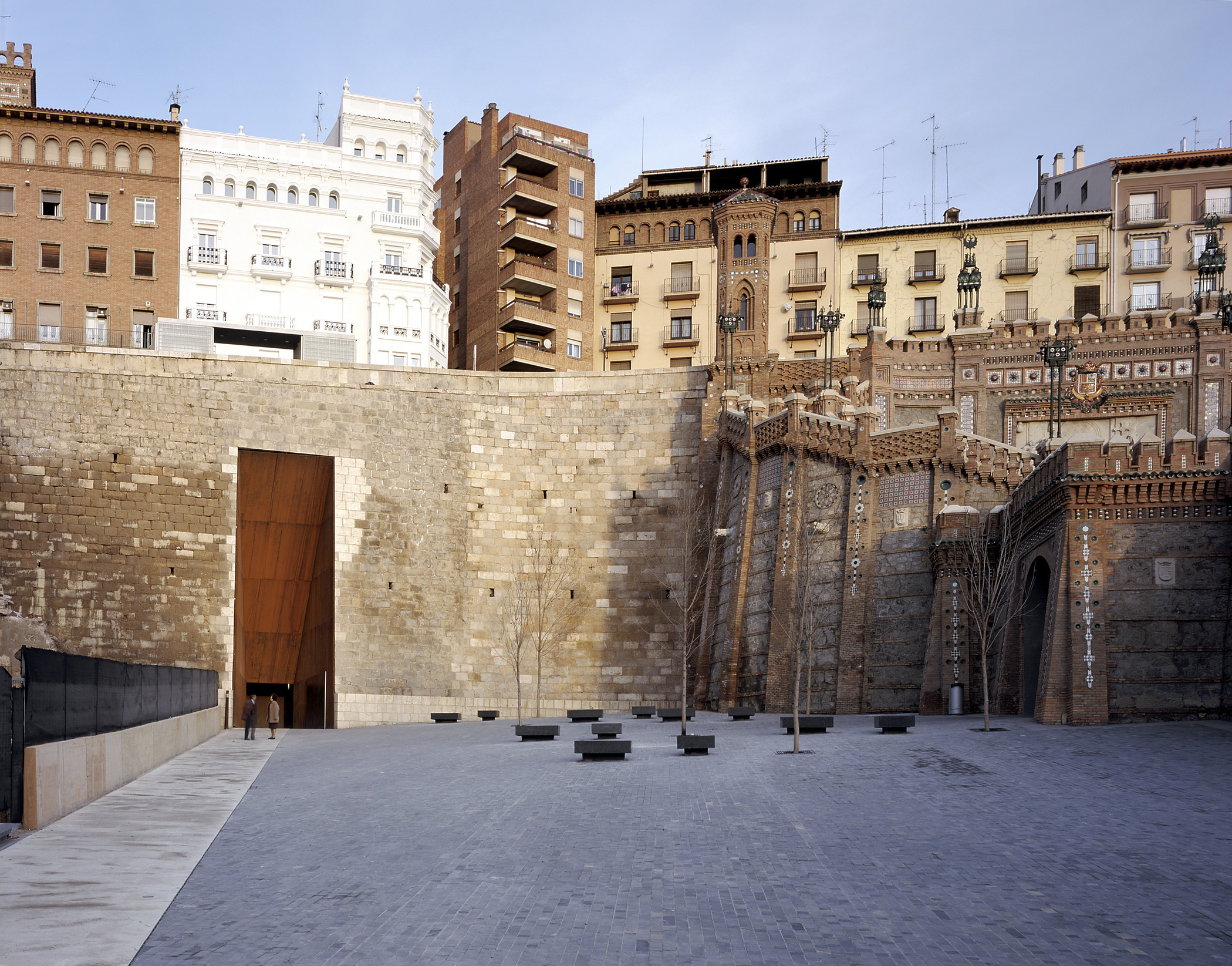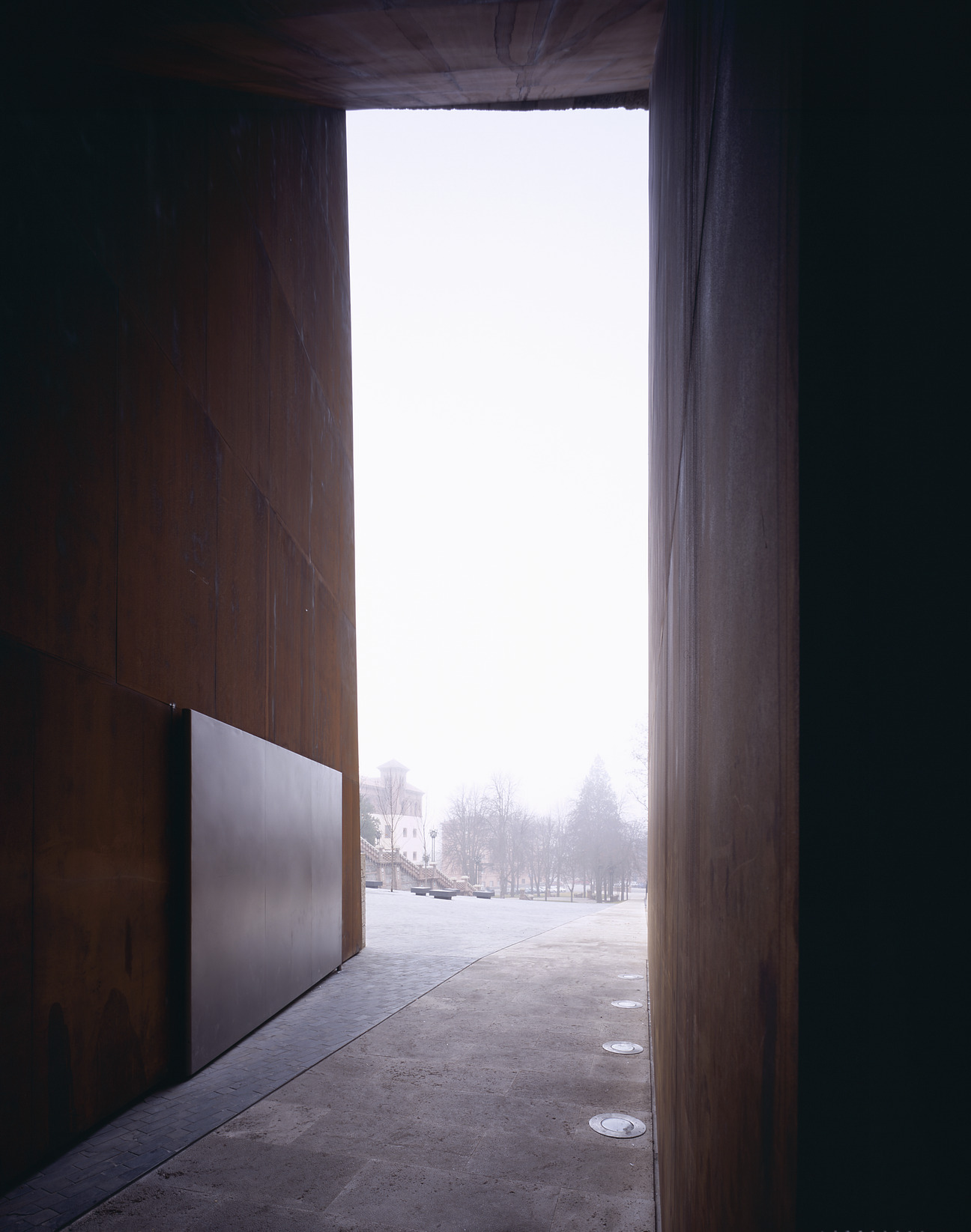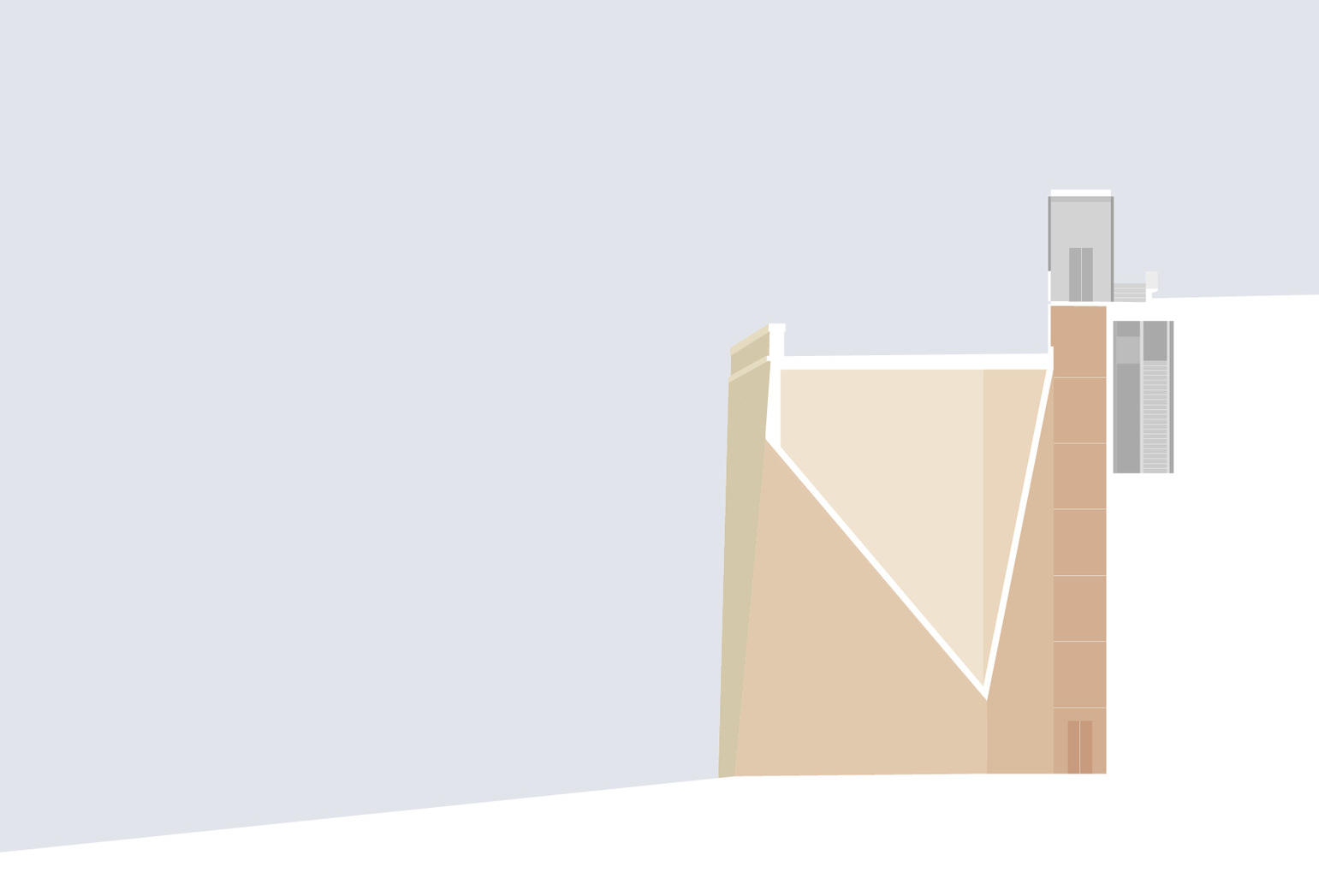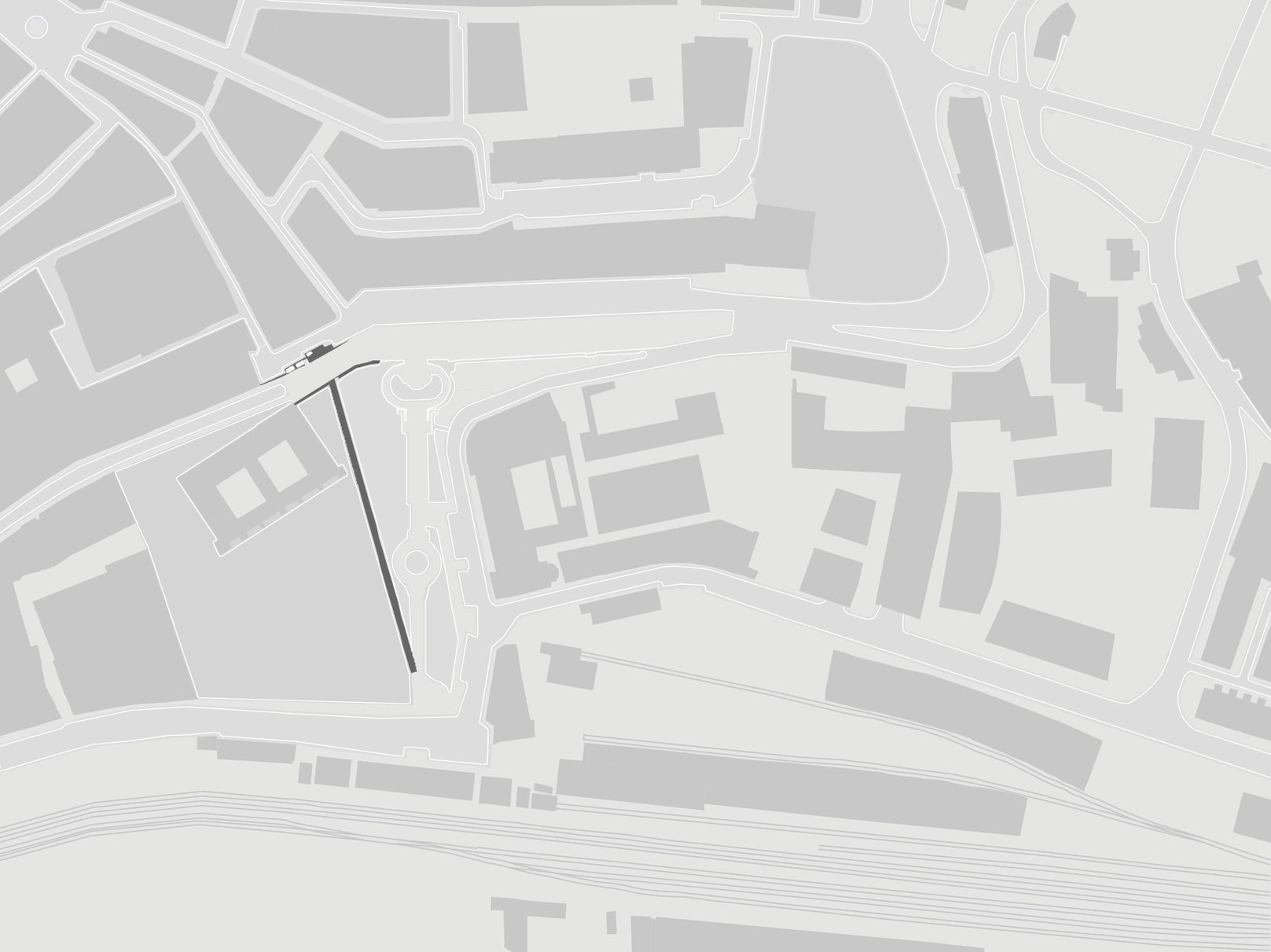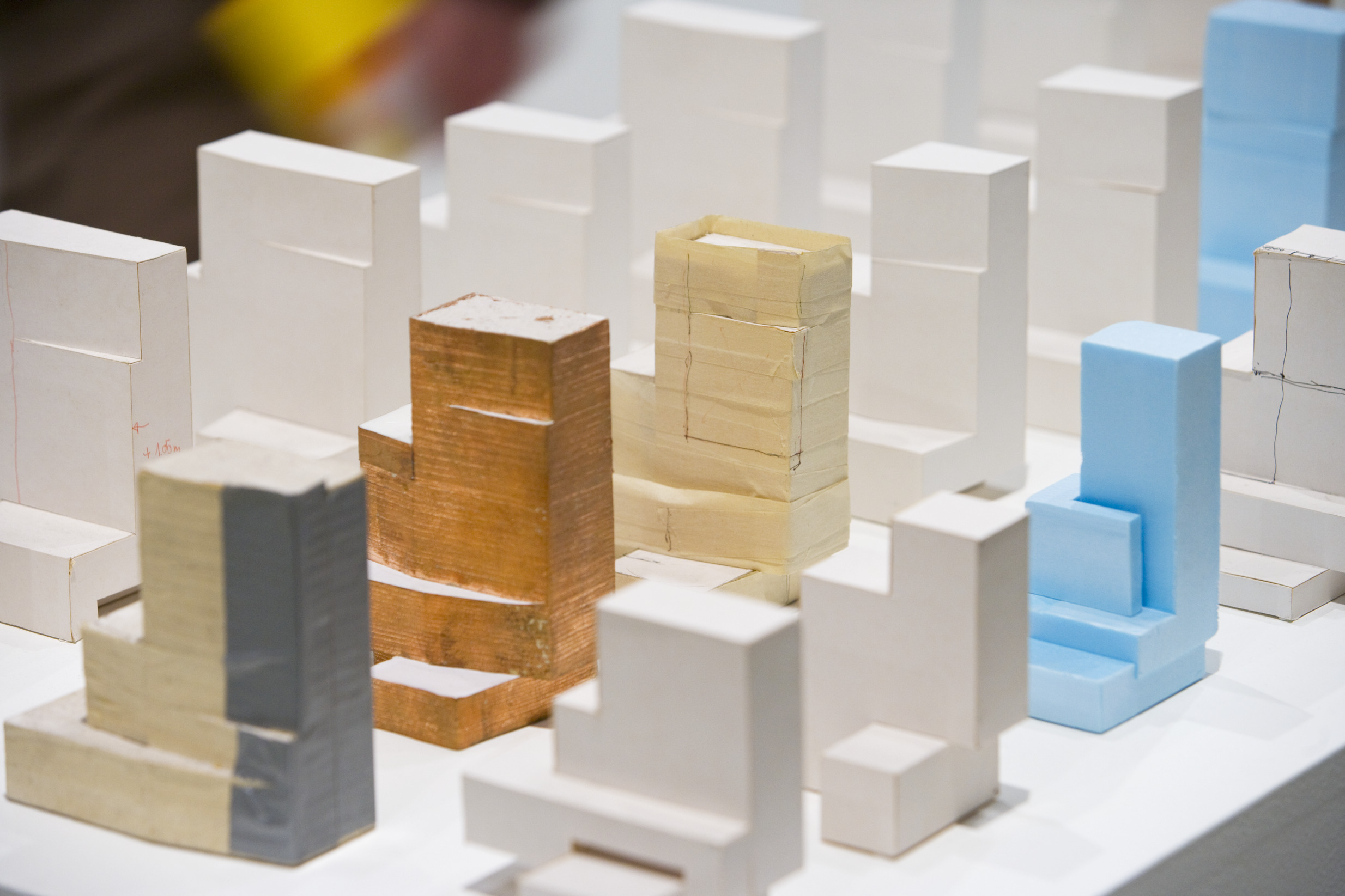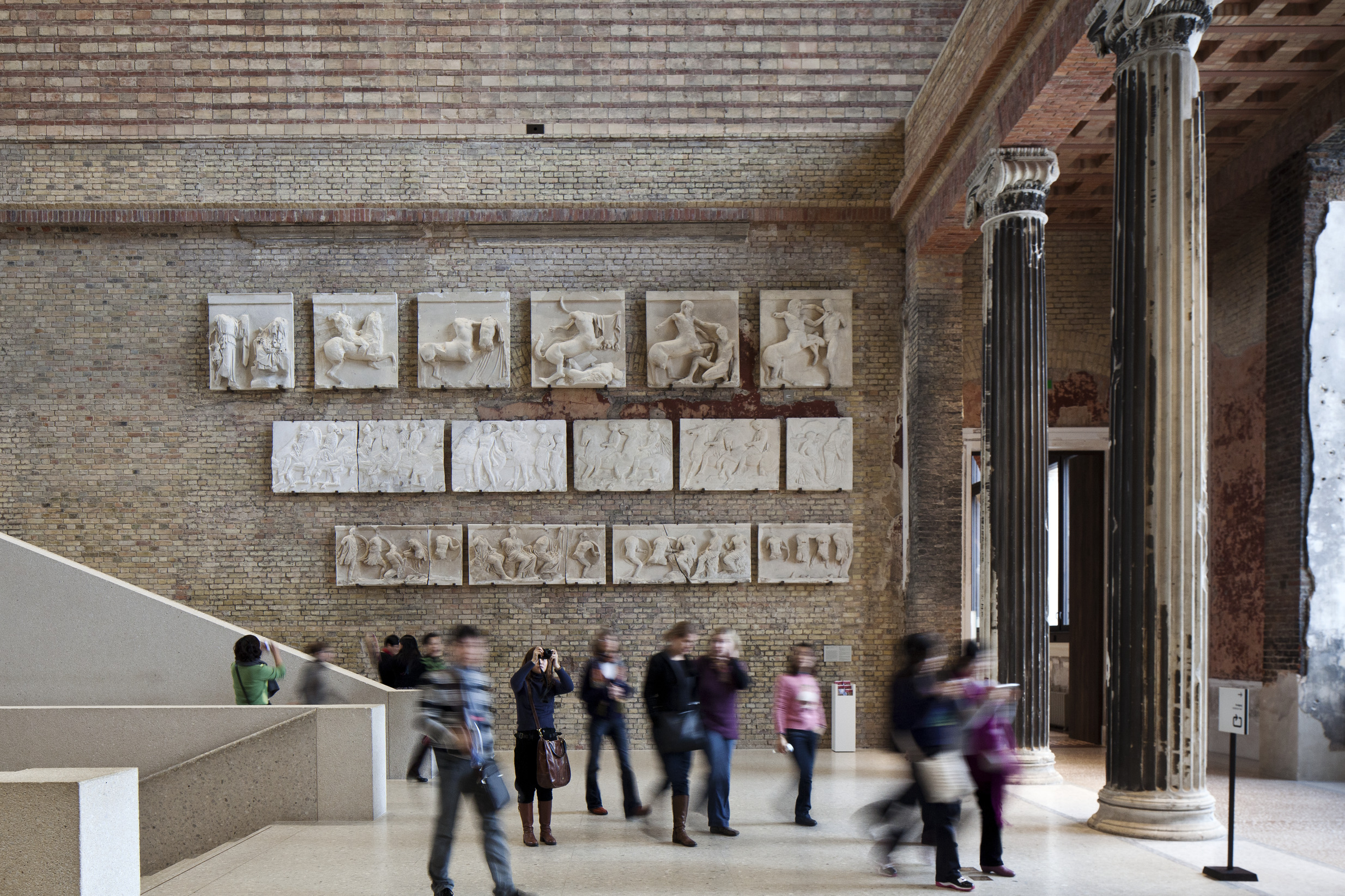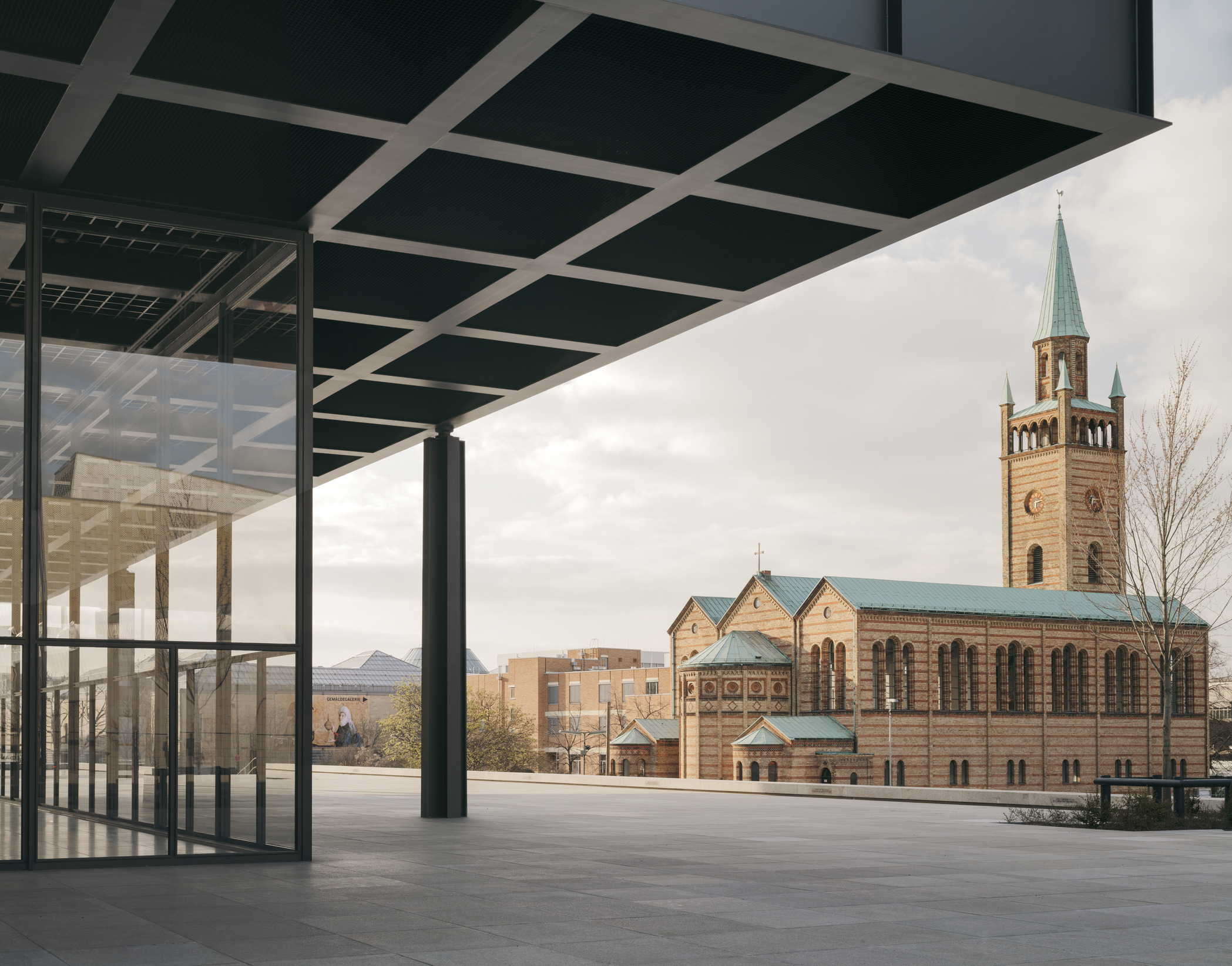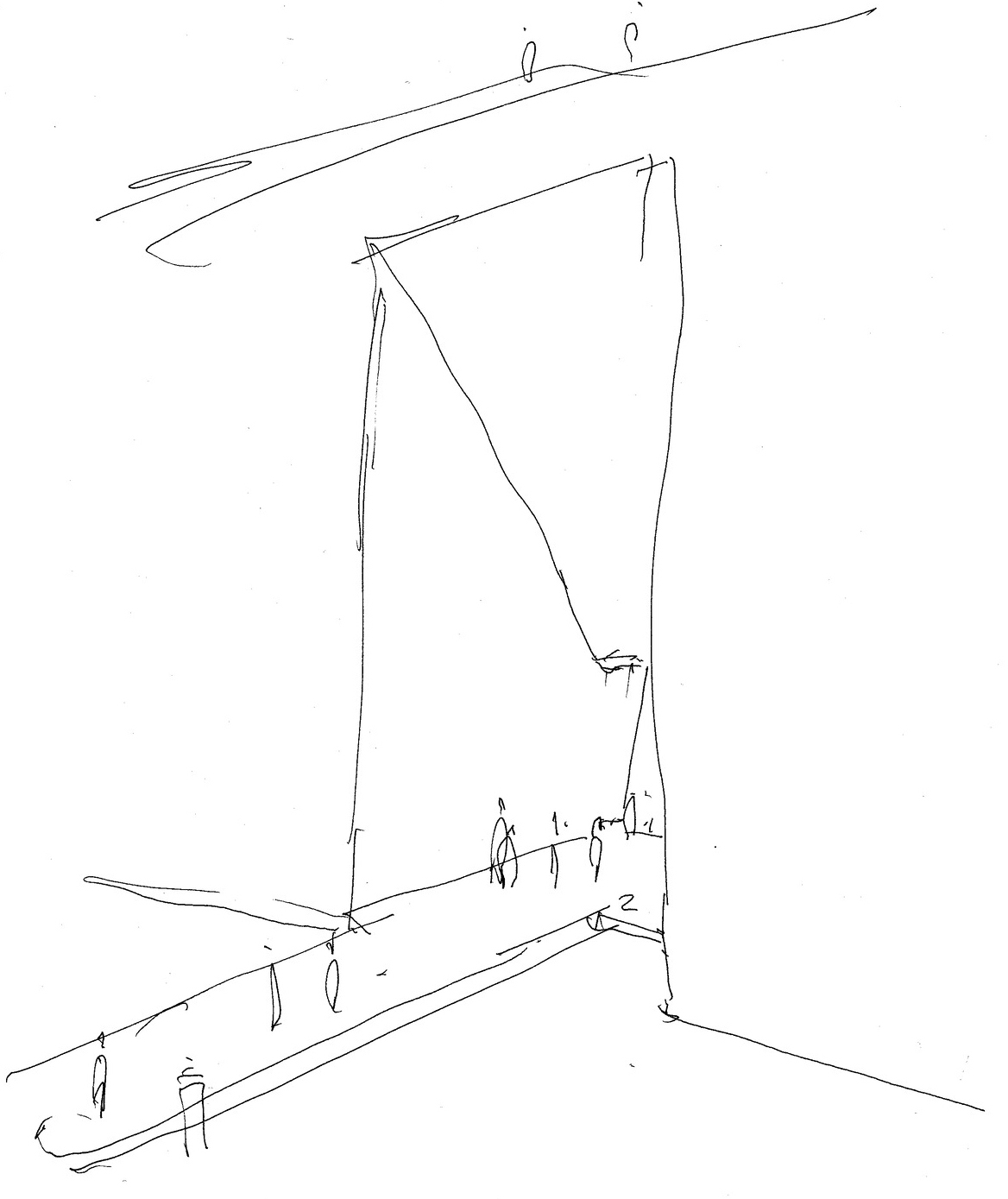Teruel Urban Development
Aragon, Spain
2001–03
Won in an international competition held by the County Council of Aragon, the eventual scope of the project was reduced from the original competition scheme. This project included the renovation of the square in front of the station at the lower level of the city, the restoration of the neo-Mudéjar style stairway, improvements to the land adjoining the station and changes to both the Paseo del Ovalo, the historic promenade built on the site of the city walls, and Glorieta Square. From this ambitious outset, the project evolved into the renovation of the station square, the creation of a new elevator connection between the square and the historic centre, and the restoration of the Paseo del Ovalo.
The project sought to retain the importance of the neo-Mudéjar stairway. This immense staircase has historically created a strong physical link between the lower level of the city where the station is located, and the Paseo del Ovalo at the upper level. Its enormous scale and presence forms a bridge to the historic centre. The stairway maintains continuity, both formally and topographically, and resolves the transition between the spaces and levels through its grand scale. The creation of the new civic square creates the appropriate setting for this monument, enhancing its historical importance. The addition of a second connection, via elevator, offers an alternative route to the historic stair.
From the station, a path of white stone, laid carpet-like across the square, begins at the same point as the first flights of the steps. Arriving by train, there are two alternatives: to take the stairway, or to walk along the pathway to the elevator connection. This gently sloping path leads to an opening in the city wall. Dug out from the rocky base of the city, this cave-like space leads to a well of natural light. A large, splayed passageway narrows before arriving at a column of light that comes from the glass pavilion at the upper level, the point of arrival of the elevators. Another path completes the journey from the station to the Paseo del Ovalo.
Acting as a large balcony with views over the city, this quality of the Paseo del Ovalo could have been compromised through the addition of a secondary means of vertical circulation. By locating the new connection to one side, competition with the historic stairway is avoided and the balcony-like quality of the Paseo del Ovalo is maintained.
Work to the Paseo del Ovalo sought to re-establish the space’s quality as an almost entirely pedestrianised urban lounge space, through the addition of trees and street furniture and improvements to parking. Visually, the Paseo del Ovalo is connected to the square at the lower level through the use of the same cobblestones.
Particular attention was paid to the lighting of the whole scheme. The vertical elevations of the parapet wall and the façade of the Paseo are illuminated to become a rich backdrop to the new landscape. Beacons of light mark traffic areas, and street furniture is illuminated at low level creating a rich texture of light and detail.
Data and credits
- Competition
- 2001
- Completion
- 2003
- Gross floor area
- 7,870m²
- Client
- Diputación General de Aragón
- Architect
- David Chipperfield Architects London
- In collaboration with
- b720 Arquitectos
- Restoration consultant
- José Ma Sanz, Antonio Pérez
- General contractor
- Necso S.A.
- Quantity surveyor
- Tirwal Técnica
- Structural engineer
- Obiol, Moya y Asociados
- Services engineer
- Perfil 7, Gabinete Turolense de Ingeniería Industrial
- Lighting consultant
- Artec Luminotecnia
